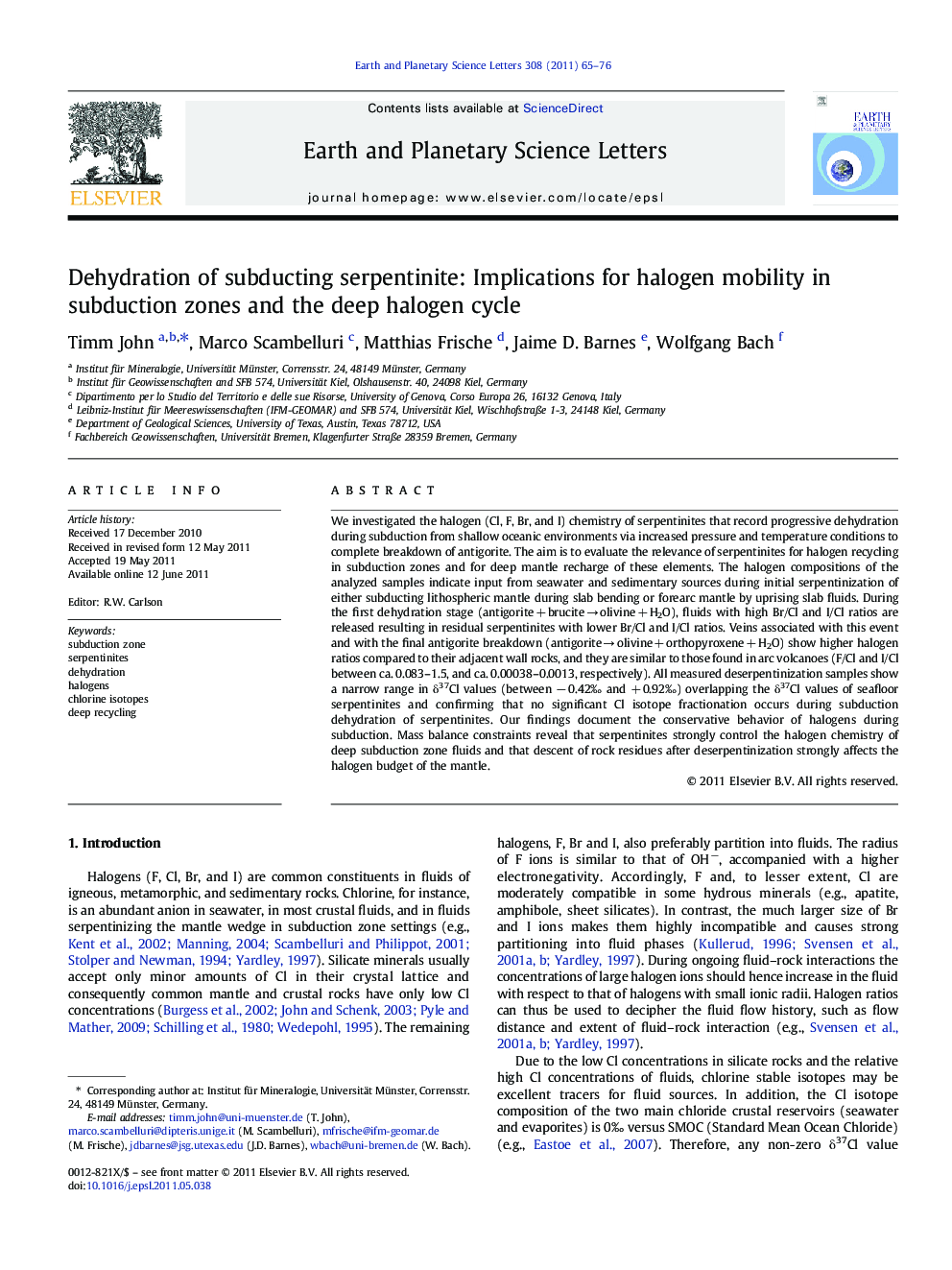| کد مقاله | کد نشریه | سال انتشار | مقاله انگلیسی | نسخه تمام متن |
|---|---|---|---|---|
| 4678034 | 1634824 | 2011 | 12 صفحه PDF | دانلود رایگان |

We investigated the halogen (Cl, F, Br, and I) chemistry of serpentinites that record progressive dehydration during subduction from shallow oceanic environments via increased pressure and temperature conditions to complete breakdown of antigorite. The aim is to evaluate the relevance of serpentinites for halogen recycling in subduction zones and for deep mantle recharge of these elements. The halogen compositions of the analyzed samples indicate input from seawater and sedimentary sources during initial serpentinization of either subducting lithospheric mantle during slab bending or forearc mantle by uprising slab fluids. During the first dehydration stage (antigorite + brucite → olivine + H2O), fluids with high Br/Cl and I/Cl ratios are released resulting in residual serpentinites with lower Br/Cl and I/Cl ratios. Veins associated with this event and with the final antigorite breakdown (antigorite → olivine + orthopyroxene + H2O) show higher halogen ratios compared to their adjacent wall rocks, and they are similar to those found in arc volcanoes (F/Cl and I/Cl between ca. 0.083–1.5, and ca. 0.00038–0.0013, respectively). All measured deserpentinization samples show a narrow range in δ37Cl values (between − 0.42‰ and + 0.92‰) overlapping the δ37Cl values of seafloor serpentinites and confirming that no significant Cl isotope fractionation occurs during subduction dehydration of serpentinites. Our findings document the conservative behavior of halogens during subduction. Mass balance constraints reveal that serpentinites strongly control the halogen chemistry of deep subduction zone fluids and that descent of rock residues after deserpentinization strongly affects the halogen budget of the mantle.
Research highlights
► Halogen concentrations and ratios and Cl isotope data indicate halogen input from sedimentary reservoirs during shallow serpentinization, either at the outer rise during slab bending or in suprasubduction shallow environments.
► During deserpentinization, fluids with high Br/Cl and I/Cl ratios are released which drives the residual serpentinites to lower Br/Cl and Cl/I and during ongoing dehydration. F/Cl ratios increase strongest with increasing degree of dehydration throughout the whole deserpentinization process. The high-pressure slab fluids liberated during the antigorite to olivine reaction have F/Cl and I/Cl ratios that are similar to those of arc volcanoes.
► The overall δ37Cl values of the deserpentinization fluids are close to 0‰, which are within the range of known arc volcanoes.
► The concentrations and ratios found in the serpentinization–deserpentinization sequence indicate the conservative behavior of halogens during subduction and fluid release.
► Mass balance calculations show that serpentinites seem to strongly control the halogen budget, and likely also the Cl isotope signature, of the deeper subduction zone fluids.
Journal: Earth and Planetary Science Letters - Volume 308, Issues 1–2, 1 August 2011, Pages 65–76